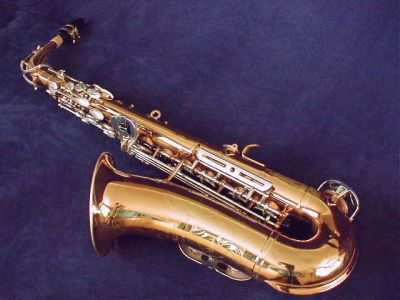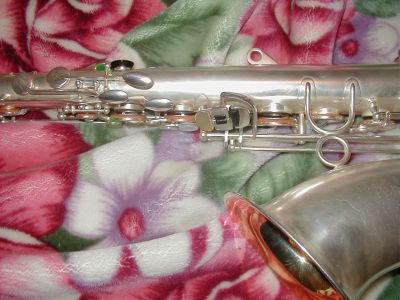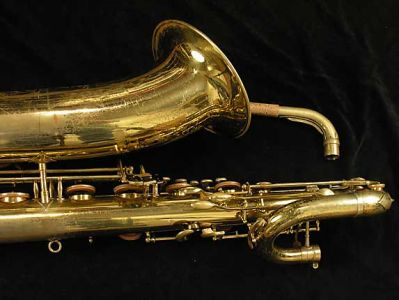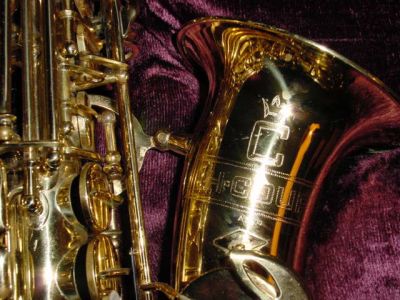| From 1965 to
1986, Herbert Couf, the president of the WT Armstrong company,
had three Keilwerth models stenciled for him under the model
name "H-Couf": the "Superba I", "Superba II" and "Royalist".
These instruments were built in Germany and mainly
corresponded to the Toneking Special (Superba I), Toneking (Superba
II) and New King (Royalist) -- all from the
Toneking/New King Series IV
line.
The "H-Coufs" were also stenciled for
Conn under the name "DJH Modified".
* The Superba I and II were pro models
featuring a high F# key.
* The Superba I generally had rolled tone holes (alto and
tenor, at least) and the Superba II generally had straight tone
holes.
* The Royalist was the intermediate model, without high F# key and
straight tone holes.
The Royalist was also produced by Borgani.
Do note, however my comments on the New
King page: while the only substantive difference between the New King
and Toneking seems to have been the altissimo F# key, this is no longer the
substantive difference in the H-Couf line: not only did the H-Couf
baritones and basses not have an altissmo F#, the Royalist is a
considerably cheaper looking horn.
According to Keilwerth, baris were not
available with a
low A extension or with rolled tone holes. That's at least partially
incorrect, so take their comment for what it is. Additionally, the bass
was a special order instrument and advertised as having a six month
waiting list. The
Low A Bass was not a production horn, just a prototype.
It's my feeling that the Superba I and II were
essentially custom-order horns and you could get just about any feature
you wanted on them, hence the low A bass, black lacquer, custom
engraving, etc.
BTB, Keilwerth-labeled models were still available
during the time the H-Coufs and DJH-Modified horns were available. Not
bad for a little sax-only shop! |









